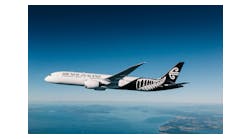It’s often interesting and at times discouraging when someone mentions flying on a regional airline. Many are not aware these aircraft are usually owned and operated by a company other than the mainline carrier whose name is on the side of the fuselage. Then there are names like little prop planes or puddle jumpers. Recently during a family gathering I overheard a discussion by some of the folks who traveled to this northern Wisconsin community commenting about their connecting flight from Chicago, obviously in an airplane operated by a regional airline.
I generally cringe at these conversations and then attempt to explain that these puddle jumpers are actually sophisticated airplanes just like the big birds and they also operate under strict rules like the big airplanes do.
Regional airlines around the world play a vital role in the greater airline industry. According to 2015 data on the website for the Regional Airline Association (RAA), regional airlines in the United States operated approximately 44 percent of the nation’s departures, carried 157 million passengers in 2015, which meant about 11,000 daily departures.
RAA member airlines operate 2,086 aircraft comprised of jet, turboprop and piston engine powered airplanes, and the vast majority of regional airlines are RAA members. 225 airports in the lower 48 states are served exclusively by regional airlines and the average seating capacity of these aircraft is 61 seats.
The regional airliner has evolved in size. In fact it’s probably not accurate to refer to some of these new jet aircraft as regional airliners. Bombardier’s C-Series boasts a seating capacity of 108 to 135 for the CS100 and 130 to 160 seats for the CS300. The Embraer E-Jets seat 80 to 124 passengers and the Mitsubishi MRJ 70 and MRJ 90 variants seat 70 to 90 passengers. These three aircraft are powered by Pratt & Whitney’s Geared Turbo Fan.
Turboprops such as the ATR and the Q400 have done the same with more seats and greater focus on passenger comfort, quiet cabins, and are very popular in certain regions around the world.
Then there’s the new piston engine entrant from Tecnam. The P2012 Traveller with passenger seating up to nine is powered by Lycoming’s newest model piston engine, the TEO-540-C1A.
Yes, the regional airline industry truly has a diverse fleet of aircraft, carrying nearly half the airline passengers in this country each and every day.
I’ll see you at the RAA 42nd Annual Convention in West Palm Beach, FL, Sept. 24 to 27. Ron




